If you were a potter 100 years ago, digging and processing the clay was actually part of your job description. Nowadays it is all too easy, you just make an order to a company in Stoke-on-Trent and magically a ton of clay gets delivered on your doorstep in convenient 12.5 kilo quantities lovingly packed in plastic bags. The reason most potters now buy clay rather than dig their own is because clay is relatively cheap; and digging it and processing it is time consuming and back breaking work. Plastic packaged processed clay is a modern invention. Most people think that pottery making begins by opening a bought bag of clay. This has only been true since the 1940s, prior to that pottery making began with a pick and shovel and a large mound of clay and a lot of hard work to process it into a malleable material that could be formed on a potter’s wheel.
When I teach a pottery course I like to start the first lesson by taking students back to the roots of pottery. I inform them that “We are going to get the clay” and then walk them down to the Black Burton clay pit armed with buckets and trowels and get them to dig the raw ingredient. We then take the raw clay back to the pottery and bash it with pestles and mortars; and add water to it to make it into a slip then pass it through a series of sieves to further break it down and remove any foreign bodies. We then let it rest in a bucket and wait for the water to evaporate over a few weeks before scooping it out of the bucket onto boards to dry further. Eventually we are able to kneed the clay and begin forming it into pottery. (Whilst waiting for it to be ready of course I do let them use the stuff in plastic bags from Stoke!)
The Burton Potters used the exact method I have just described, but they did it on more of an industrial scale. The clay was dug onto carts and taken to the potteries where it was tipped into a blundger, which is like a large scale steam powered Kenwood chef. The blundger would mash the clay up and break it down. It would then be sieved into a clay pan. A clay pan is like a shallow swimming pool where the clay would dry. It would then be dug out of the clay pan and left to dry on the walls of the clay pan. It would be mixed up using a machine called a pug mill and it could then be thrown on the pottery wheel.
The earthenware clay (terracotta) at Burton can be found at Mill Hill. It’s very easy to get to the clay along a footpath. If you park close to Burton Bridge and take the lane that follows the river downstream, you bear right onto a footpath that leads past Greta House. Before you get to the bridge over the stream you take a sharp left. It is worth looking at your feet at this point, because the potters made this track and they used broken pots and seconds as hard-core. You can find potters’ finger prints in coils of clay that they would have used for separating pots in the kilns. After a short while you will notice a steep shale banking on your left hand side. This banking is the Burton clay. As kids we used to call it the slag heap and we would joyfully spend whole days climbing it and then launching ourselves off the top and “skiing “ back down in wellie boots. God only knows what our parents thought when we turned up home as black as the ace of spades with wellies full of black shale.
The Burton (Mill Hill) clay is jet black when processed, which is an unusual colour for a clay. I have been told that it is black because it has a high oil content, which possibly provides “free” fuel during the firing process? I have wondered if the old name for Burton,” Black Burton”, originated because of the colour of the clay? The clay throws well on a pottery wheel. You can throw it really thin and produce complex overhanging shapes with ease. The clay fires light red in colour and I have fired it all the way up to 1250 degrees without it melting.
Stoneware clay was available opencast in the field below Waterside pottery (opposite the football pitch and a bit further up the road.) However this clay ran out in 1905. A drift mine was then opened to access a different clay seam. I have written about the stoneware mine in my article on “The last potter of Burton-in-Lonsdale”

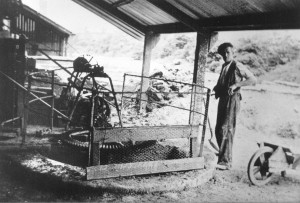
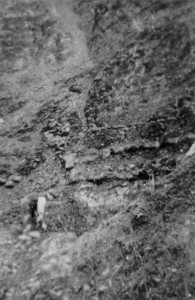
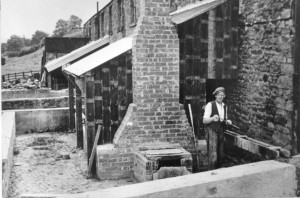
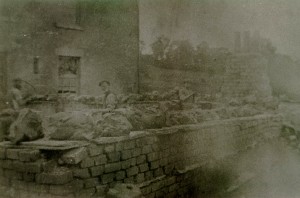
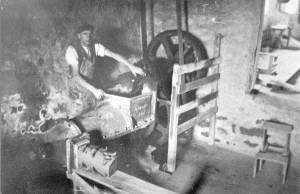
Grandad Jack Telford was a laborer at Waterside for quite a few years. I also remember Richard Bateson and Henry his son. I use to go shooting with Henry at Kendal Rifle club and also frequented the Hill Inn regularly in his companyand his friend Cabby Hay. Good old days